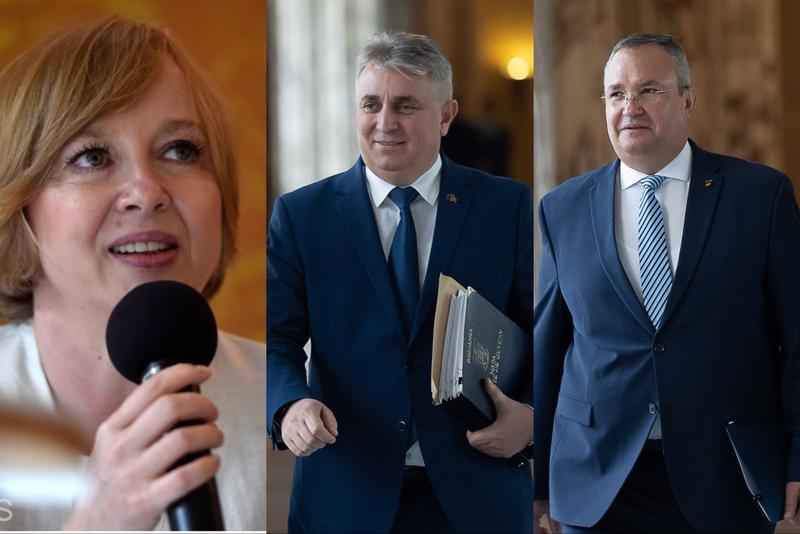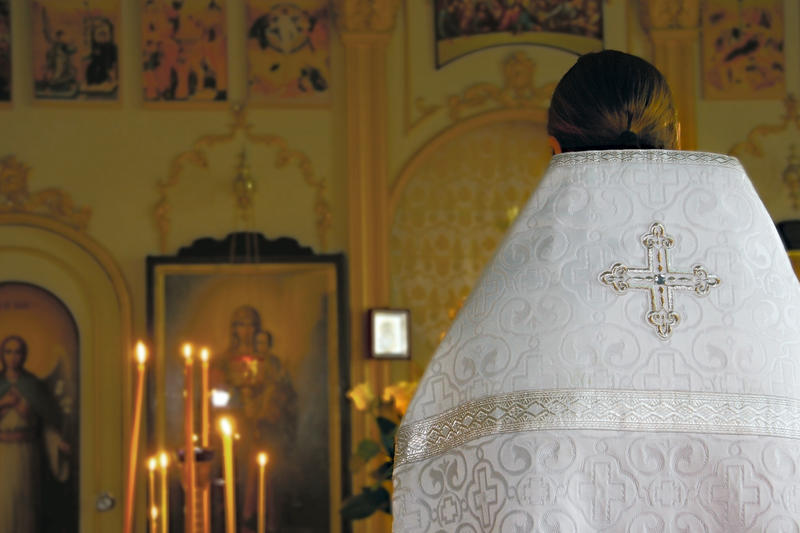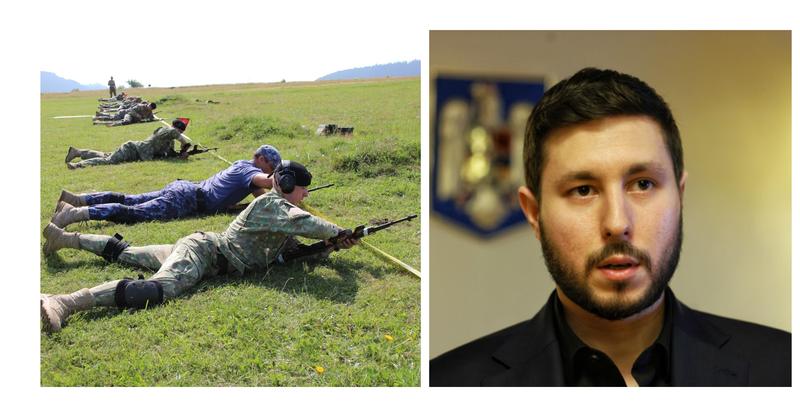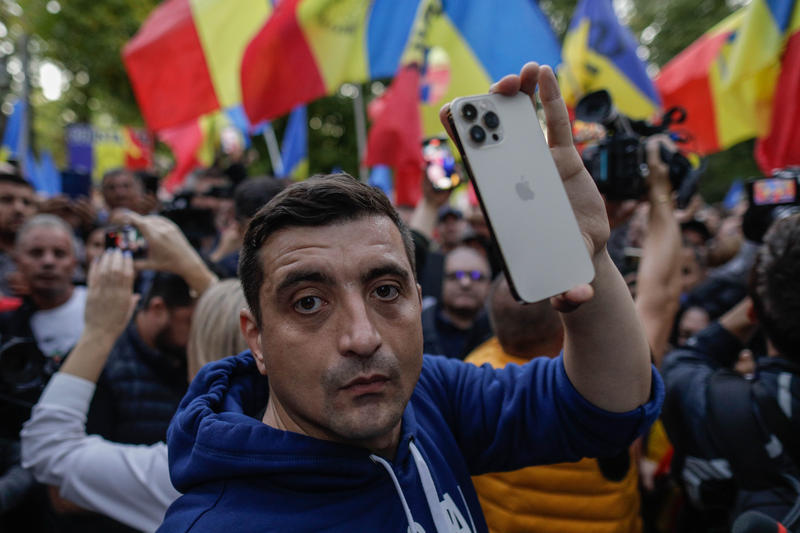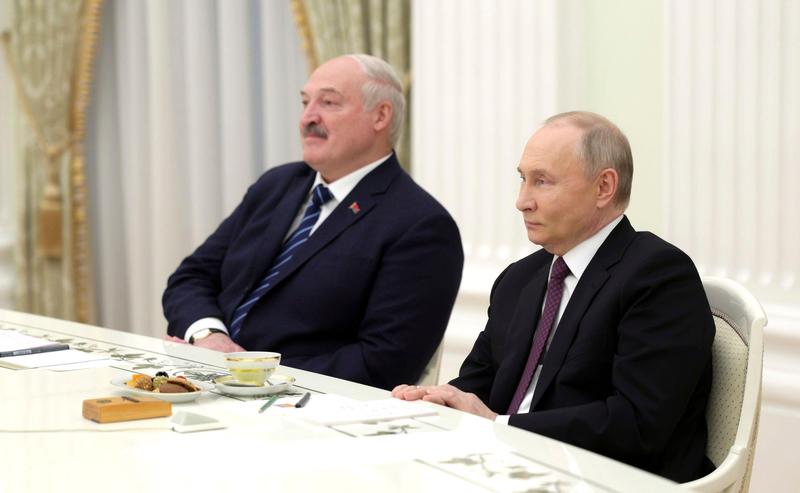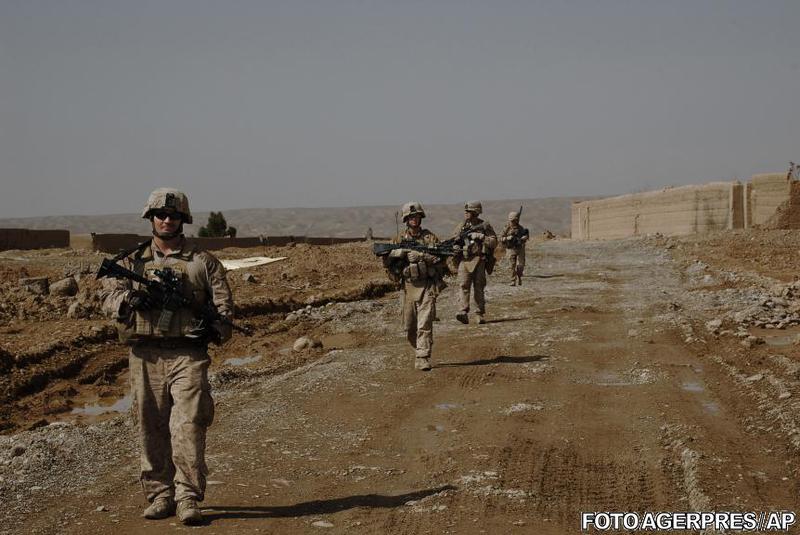Changing Tunes
by Manuela Preoteasa
Low-brow entertainment and "non-event" news dominate public-service broadcasting in Romania. Reform is underway, but deplorably slow.
As a leader of the political opposition before the presidential and parliamentary elections of 2004, Traian Basescu was not welcomed on Romanians’ television screens.
Kept off the air when he was too clever, shown on TV mostly when he said something dull, Basescu was even sent home by a private television studio from a debate when his rival in the presidential run-offs, then-Prime Minister Adrian Nastase, failed to turn up.
Despite such experiences, Basescu won the presidential race in December 2004 and it is perhaps such experiences that prompted Basescu, a former sailor, to put media on his reform agenda after he took the country’s helm and to promise an environment friendlier to independent media, especially television.
Subsequent content research carried out by the Bucharest-based media NGO Media Monitoring Agency (AMP) revealed the extent of political bias during the campaign, showing that all of Romania’s major television stations refrained from criticizing leaders of the then government.
It is unbalanced coverage that is the main reason why in recent years the number of Romanians saying they do not trust the broadcast media has increased by 10 percent.
The principal factors why both private and public-service operators have behaved in partisan fashion are tough commercial and political pressures, pressures exacerbated under the former government of the Social Democratic Party (PSD). In recent years, programming has become increasingly tabloid in style and ownership has been concentrated in the hands of a few players, many of them unknown.
Television has become a tool to protect various political and business interests. These are the main findings of a recent EUMAP report on television launched in Romania on 28 November.
GOOF TELEVISION
Romania has in recent years seen a boom in advertising, with the market growing by 20-25 percent annually. But it would be wrong to assume that this has given a boost to Romania’s many television outlets or given them a greater degree of editorial freedom.
The cash from television advertising – estimated at a net 130 million euros in 2004, according to Zenith Media – is shared by only a few players. One single station, Pro TV, owned by American investor Central European Media Enterprises (CME), reaps one-third of television ad revenues. Most of the rest is grabbed by two other private stations. That leaves some 150 television stations in the country struggling to survive.
The battle for survival is having an impact on content. Ralu Filip, the president of the main regulator, the National Broadcasting Council (CNA), says that advertising costs, measured by GRP (gross rating point), is low compared to other markets in the region and that the profile of viewers is unattractive to advertisers.
The result is that, to pull in advertising, broadcasters are chasing only mass viewership and are not trying to produce quality programming.
This tabloidization of television programming is true not just of private broadcasters, but also of the public-service television broadcaster, TVR, which receives some 75 percent of its budget from license fees and has 100 million euros in turnover.
TVR operates four channels: TVR1, the most popular channel in the country with 22 percent of the audience in 2004; a generalist channel, TVR2, that targets the young; TVR International, which airs abroad; and TVR Cultural, a satellite channel airing cultural programs.
(TVR runs also four regional studios, in the cities of Cluj, Iasi, Timisoara, and Craiova.) Quality programs tend to be exiled to the lower-ranked public channels, TVR2 and TVR Cultural, while television shows such as "Suprize, surprize" (Surprises, surprises) occupy prime time on the station’s first channel.
The show is an example of low-brow docu-tainment, mixing chintzy variety-show performances with real-life melodrama – in which, for example, separated relatives are reunited live in the studio – and its audience share peaks at 30.7 percent, making it one of the most popular TV programs in the country.
All major stations, whether they be private broadcasters – like Pro TV and Antena 1 – or TVR, compete for ratings primarily by airing telenovelas and light entertainment.
Investigative journalism is rare. The only dedicated investigative programs were both taken off the air in mid-2004, seemingly because their ratings were too law. Both were broadcast by private channels, "Cutia neagra" (Black Box) by Antena 1 and "Reporteri incognito" (Incognito Reporters) by Prima TV.
News journalism, in-depth reporting, and quality political or economic programs are almost non-existent on the major stations. The vacuum is being largely replaced by the "non-events" news, industry slang for issues of no broad public interest such as minor cases of domestic violence, thefts, and car accidents. TVR does little that is distinctive with its public funds. Largely, it imitates its commercial competitors.
However, a distinctive and promising feature in this otherwise bleak media landscape has recently emerged, in the form of dedicated news channels. Chief among them is Realitatea TV, which first entered the market in 2001 but re-launched itself with more success in the autumn of 2004.
Realitatea TV is seen as an influential channel, producing some high-quality, in-depth news, and current-affairs programs. The other all-news channels, N 24 and Antena 3, have only small audiences as yet. Still, some of the news programs of the all-news stations have become better known even than those aired by the public-service broadcaster.
(A poll conducted in April 2005 by the local market-research company INSOMAR found that TVR1 ranked only fourth as a source of news, after the private channels Pro TV, Antena 1, and Realitatea TV.) The EUMAP report found that it is now largely accepted that hard, investigative journalism cannot be expected from generalist TV channels, which seem likely to continue to air mainly mass-capturing entertainment programs.
REFORMING?
The poor performance of public-service news service highlights a broader crisis in public-service broadcasting over the past decade. Such concerns were the ostensible reason why in early 2005 the new governing coalition set up a parliamentary commission to review the performance of public-service radio and television.
The commission’s report concluded that programs aired by the public-service broadcasters had favored the former government of the Social Democrats. The commission also suspected that the public broadcasters had been involved in illegal financial transactions.
However, there was no follow-up investigation and, in the end, no one was held to account for the public broadcasters’ sorry performance. Instead, parliament chose simply to dismiss the supervisory boards of both institutions.
The move was seen by commentators as an attempt to "replace their [former government] people with ours [current government]," an extension of the tradition of each new government appointing supporters to head public channels.
Basescu did not, however, use his powers to appoint one member of the council of administration, saying that TVR desperately needs a real reform, and not only cosmetic changes.
Parliament – in which Basescu’s Democrat Party, the National Liberal Party (PNL), and the Democrat Union of Hungarians in Romania (UDMR), and the Conservative Party have a weak majority – has so far not heeded Basescu’s call, removing a change in the law on public-service broadcasting from its list of priorities after the supervisory councils were replaced.
A bill was eventually introduced by Raluca Turcan, the chair of parliament’s culture and media committee, but it failed to pass through parliament. Turcan’s bill had been drawn up in consultation with experts and representatives of a large number of NGOs and civil-society groups. Despite promises by political parties to draft another bill, the bill is still a work in progress.
The reason why Turcan’s bill was scrapped, political insiders say, was an unwillingness to strip the government of its right to nominate its own members to the 13-member governing body of public radio and television, to separate executive and supervisory powers, and to allow representatives of civil society onto the council.
Without new legislation in place, reforming public broadcasting is difficult. Management is, though, making some effort. TVR has tried recently to focus more on hardcore journalism, but its few investigative programs still avoid hot issues such as major corruption cases.
THE BIG BOYS
Political influence is also a concern outside public-service broadcasting. Two powerful media conglomerates – centered on Pro TV (15.8 percent of audience share) and Antena 1 (12.3 percent) – dominate the television market.
Both have significant political connections. Antena 1 is owned by the Voiculescu family, headed by Dan Voiculescu, the leader of the Conservative Party, a small but important member of the ruling coalition.
Pro TV is a partnership between CME and Adrian Sirbu, a former prime-ministerial advisor in the early 1990s. One of the most influential stations in Romania (reaching 77 percent of the country’s 22 million people), Pro TV has been sharply criticized for obeying the former government until 2004.
Its slavish editorial policy may have been related to the multimillion dollar tax debts that it had accrued. The station has since paid off all its debts.
There may be similar political ties in the new media groups that are emerging as a process of consolidation begins. EUMAP’s research found that television proprietors have made a habit of concealing their identity by registering in tax havens or in Western European countries such as Switzerland where legislation allows for offshore owners to remain anonymous.
No Romanian authority knows or checks who owns the capital now being invested in the media market.
In the absence of political action to introduce new legislation, what can the broadcasting regulator, the CNA, itself do to help create an environment friendlier to independent media? For a start, it should, as the EUMAP suggests, oblige applicants for broadcast licenses to reveal the real identity of their shareholders and to ensure that no one owner can control more than 30 percent of the nationwide audience.
